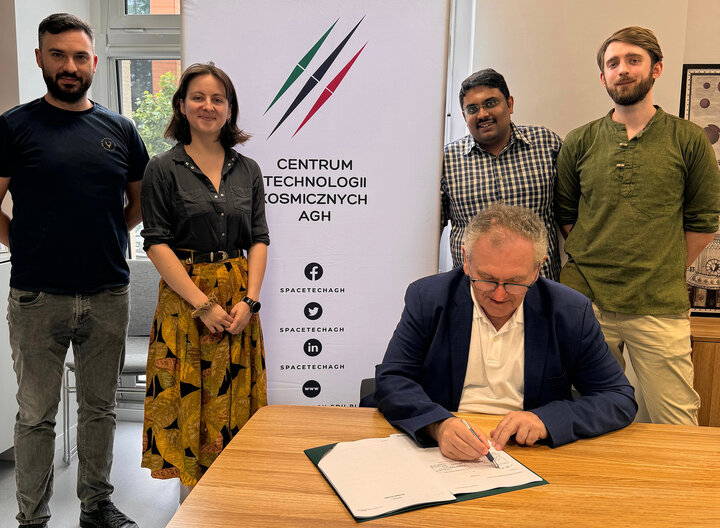
The agreement concluded by the AGH University Space Technology Centre and the European Space Agency will allow to test cutting-edge nanomaterials developed at the AGH University. Their stability shall be verified at Low-Earth Orbit.
The “MXene Material and Wearable Device Experiments in Low-Earth Orbit Space Habitat,” MXene in LEO in short, have been carried out for nine months already, with the main focus on studying Mxens. These are novel nanomaterials of numerous potential applications in space missions.
Owing to the contract signed on the 1st of July, we will be able to test their stability at Low-Earth Orbit. What is more, the researchers have decided to combine nanomaterials with bacterial cellulose, a biomaterial whose ease of production may contribute to its applicability in space missions as well as it becoming an alternative to oil-based materials. With the help of these two modern materials, the researchers are planning to create bands for monitoring astronauts’ heart rate. It is supposed to be one of the first steps on the way to developing sensors monitoring life functions during missions.
The team consists of: Professor Tadeusz Uhl (director of the Centre), Dr Shreyas Srivatsa (koordynator eksperymentu), Dr Agata Kołodziejczyk, Dr Krzysztof Grabowski, Dagmara Stasiowska, MSc Eng., and Wojciech Guziewicz, MSc Eng.
The experiment will expand our knowledge of the potential for using sensors based on MXene-type nanomaterials in space and provide a demonstration of the technological capabilities of devices of this type. The results will enable more effective monitoring of astronauts' vital signs during space missions, with the possibility of future use of such devices in telemedicine on Earth.
The experiment is financed by the European Space Agency and supported by POLSA, the Polish Space Agency.

 AGH University Alumni Day 2024
AGH University Alumni Day 2024  20 years of AGH University-SIT partnership and inauguration of Alumni Association in Tokio
20 years of AGH University-SIT partnership and inauguration of Alumni Association in Tokio  Projects by AGH University Main Library with funding from Scientific Social Responsibility programme
Projects by AGH University Main Library with funding from Scientific Social Responsibility programme  Honouring those we lost this year
Honouring those we lost this year  On energy transformation and more. Distributed Energy Congress
On energy transformation and more. Distributed Energy Congress  AGH University to establish AI Factory
AGH University to establish AI Factory 

